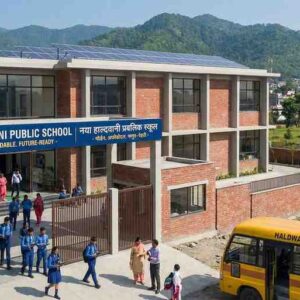In India’s rapidly expanding educational landscape, medium-sized schools are often overshadowed by the towering reputations of large, prestigious institutions or the charm of small, personalized schools. However, medium-sized schools—typically those with a student population between 500 to 2,000—have quietly emerged as an ideal middle ground for families seeking the right balance of academic rigor, personal attention, and community involvement. As more parents seek alternatives to traditional schooling, medium-sized institutions are becoming increasingly attractive for their many hidden benefits.
What Defines a Medium-Sized School in India?
In India,medium-sized schoolsare typically those that are not part of the large, sprawling networks with thousands of students, nor are they the smaller, boutique schools that cater to just a few hundred students. These schools, with a student body ranging from500 to 2,000 students, strike a balance between size and intimacy, providing the benefits of both larger infrastructure and a more personalized approach to learning.
Some examples of schools considered medium-sized include those in suburban and urban areas that aren’t part of high-end, high-fee institutions but still provide a solid educational experience. These schools often follow well-established boards likeCBSE, ICSE, and IGCSE, and have facilities that accommodate a range of extracurricular activities and specialized subjects while maintaining a close-knit, family-like environment.
1. Balanced Attention: The Sweet Spot Between Large and Small Schools
One of the most significant benefits of medium-sized schools is their ability to offerindividualized attentionwhile still maintaining a sense of community. Unlike large schools, where students often get lost in the crowd, medium-sized schools typically have abetter teacher-to-student ratio, allowing for more focused interaction between students and faculty. Teachers can get to know students on a personal level, providing tailored support and feedback, which is often lost in larger schools where individual attention is harder to achieve.
In contrast to smaller schools, which may struggle with limited resources,medium-sized schools can offer personalized attention without compromising on the variety of subjects and extracurriculars available.This enables awell-rounded developmentfor students, where they are not only academically nurtured but also encouraged to explore their creative and social interests.
2. Strong Community and Social Engagement
Medium-sized schools excel in creating astrong sense of community. With fewer students, these schools foster meaningful relationships among peers and faculty.Students in medium-sized schools are more likely to know each other wellacross different grades, which creates a more cohesive social environment and reduces cliques and isolation.
Moreover, medium-sized schools tend to offer a moreinclusive environmentcompared to larger institutions, where social divisions can be more pronounced. This encouragescollaborative learning, team-building activities, and a shared responsibility for maintaining a positive school culture. It’s an environment where students can form strong friendships while still being actively involved in leadership and extracurricular roles.
3. Adaptability and Innovation in Education
Unlike large schools that often follow rigid, pre-determined structures due to their size,medium-sized schools are more flexible and open to innovation. These schools can quickly adapt to new teaching methods, technologies, and extracurricular activities, giving students access to a more dynamic learning experience.
Whether it’sincorporating project-based learning,integrating technologyfor better interactive learning, or offeringreal-world internships, medium-sized schools can stay ahead of the curve bycustomizing the curriculumto suit the evolving needs of their students.
This adaptability also extends to theindividualization of learning, where teachers can recognize specific academic strengths and weaknesses and help students thrive in a morecustomized manner.
4. Academic Rigor with a Personal Touch
In medium-sized schools, students are provided withrigorous academic programsbut in a manner that is less impersonal than what is often found in larger schools. The smaller student body allows teachers tofocus on student outcomeswhile still building strong, supportive relationships. This is especially important in Indian schools, where the pressure to excel academically is immense.
For instance,medium-sized CBSE and ICSE schoolsprovide an environment where students canexcel academically without the overwhelming pressureof competing with thousands of students in larger institutions. Whether it’spreparing for competitive exams like JEE and NEETor focusing on the broader academic curriculum, these schools create a supportive environment where individual goals are aligned with school performance.
5. Accessibility and Affordability
In India, where education costs can sometimes be prohibitively high,medium-sized schools offer a sweet spot in terms of affordability.These schools typically charge moderate feeswhile still offering a range of academic and extracurricular opportunities. Unlike the high-end international schools with exorbitant fees,medium-sized schools cater to middle-income familieswithout sacrificing quality education.
This makes medium-sized schoolsmore accessible to a wider range of students, ensuring that a high standard of education is available without the financial burden that comes with elite institutions.
6. Better Infrastructure and Facilities Than Small Schools
While small schools may offer personalized attention, they often lack the extensive infrastructure that many families expect.Medium-sized schools, however, offer the perfect blend—enough resources to run diverse programs, provide access to well-equipped science labs, sports complexes, and cultural activities, but without the bloated, underutilized facilities that often plague large institutions.
From well-equipped classrooms to libraries, sports facilities, and technology integration, medium-sized schools strike the balance between quality education and accessible resources. They typically have enough students to sustain a variety of programs, but not so many that they become impersonal or lose the ability to maintain their facilities.
Conclusion: The Hidden Gem of India’s Education System
In India’s educational hierarchy,medium-sized schools often get overlookedin favor of either highly exclusive institutions or large, well-established networks. However, the advantages they offer—personalized attention, community engagement, flexibility, academic rigor, and affordability—make them an ideal choice for many families looking for well-rounded educational experiences.
As parents continue to navigate the complex decision of where to send their children, it’s important to look beyond the branding of big schools and recognize the unique benefits of medium-sized schools, which are increasingly proving to bethe hidden gems of India’s education system.These schools not only meet the academic needs of students but also provide an environment that nurtures their emotional, social, and personal growth, preparing them for the future.













